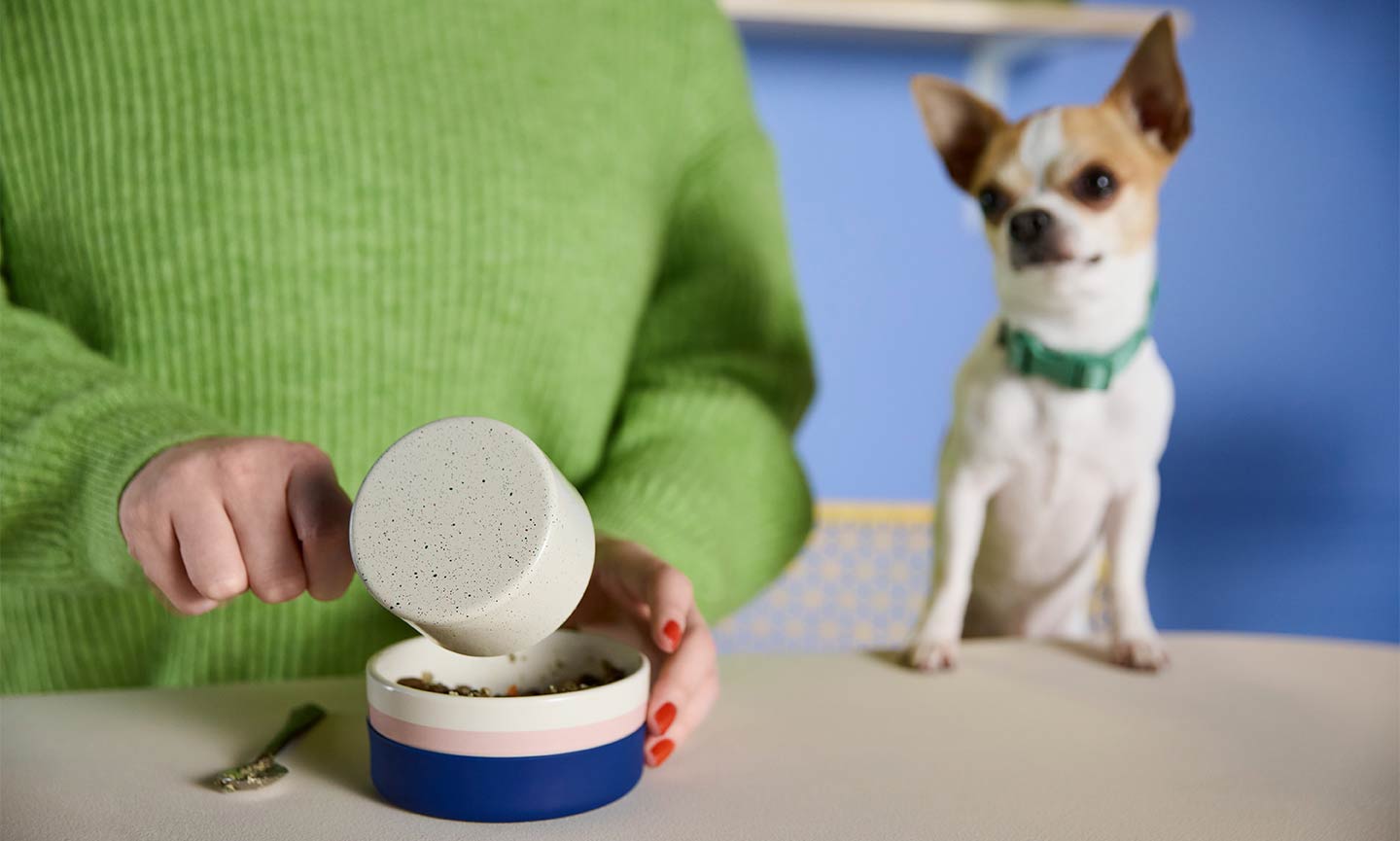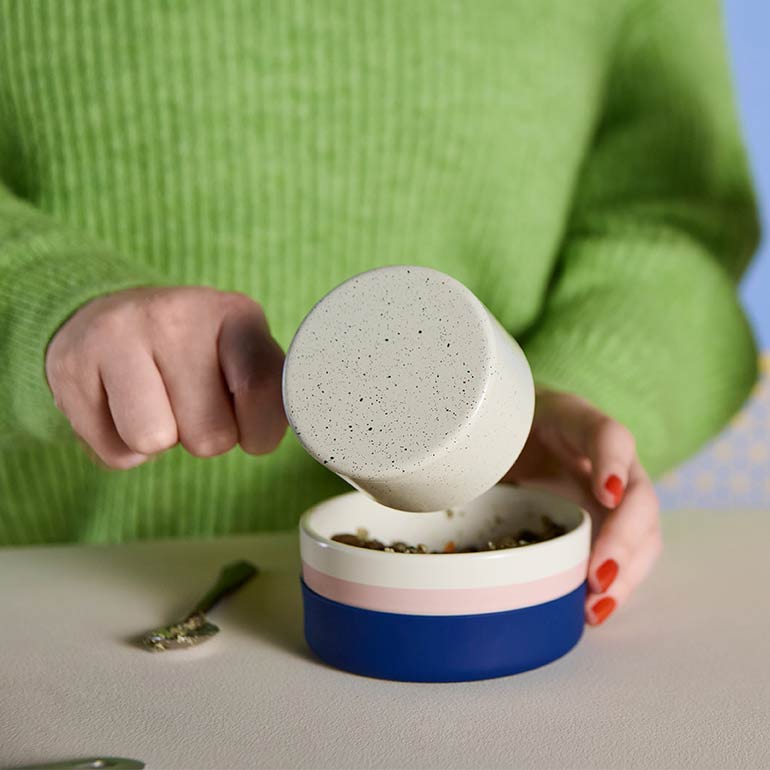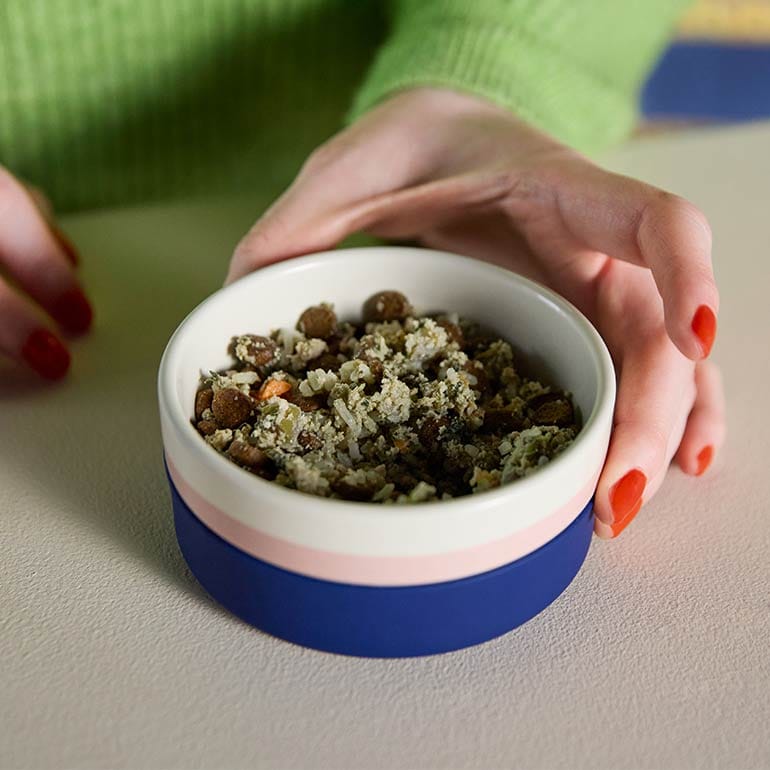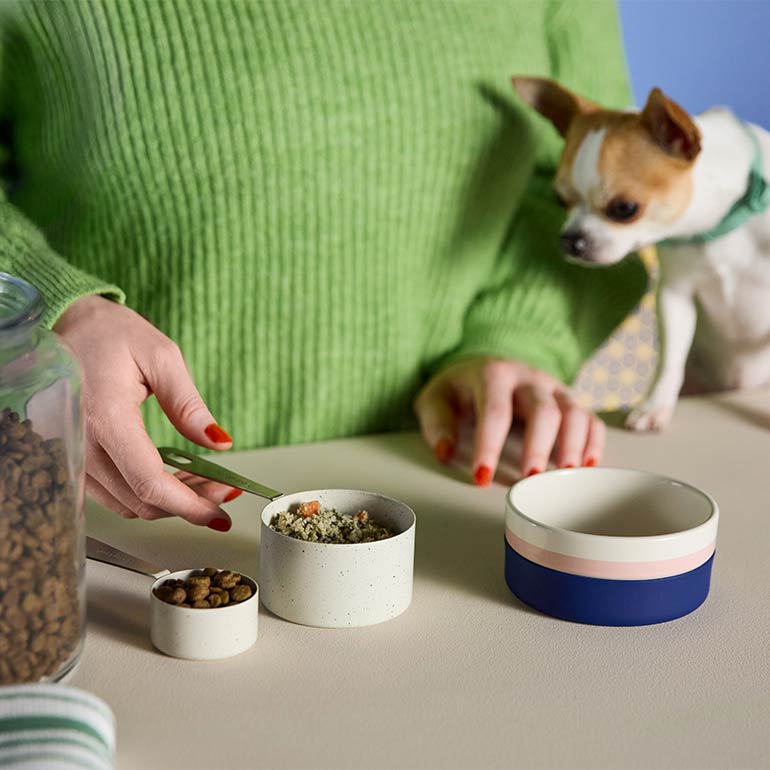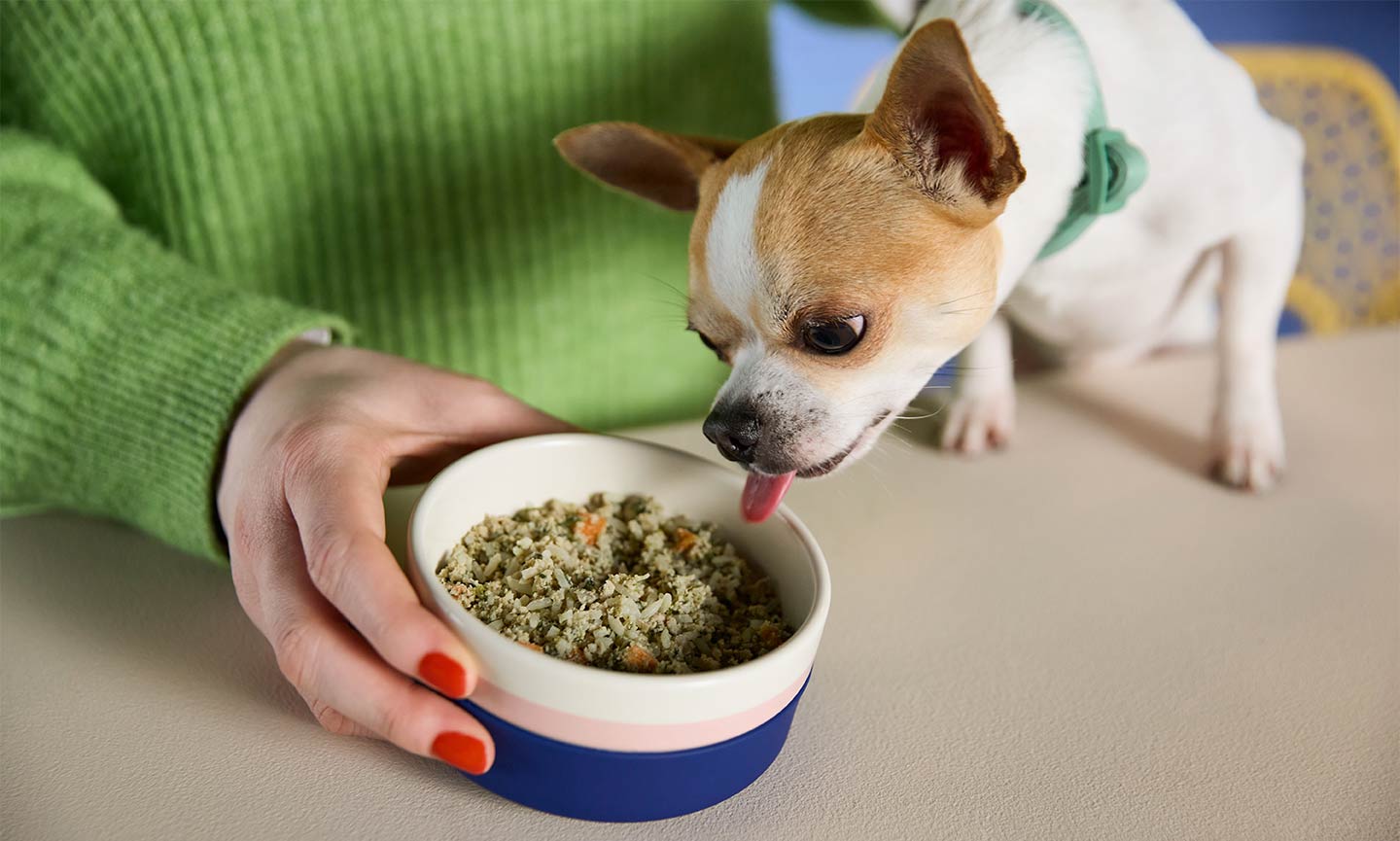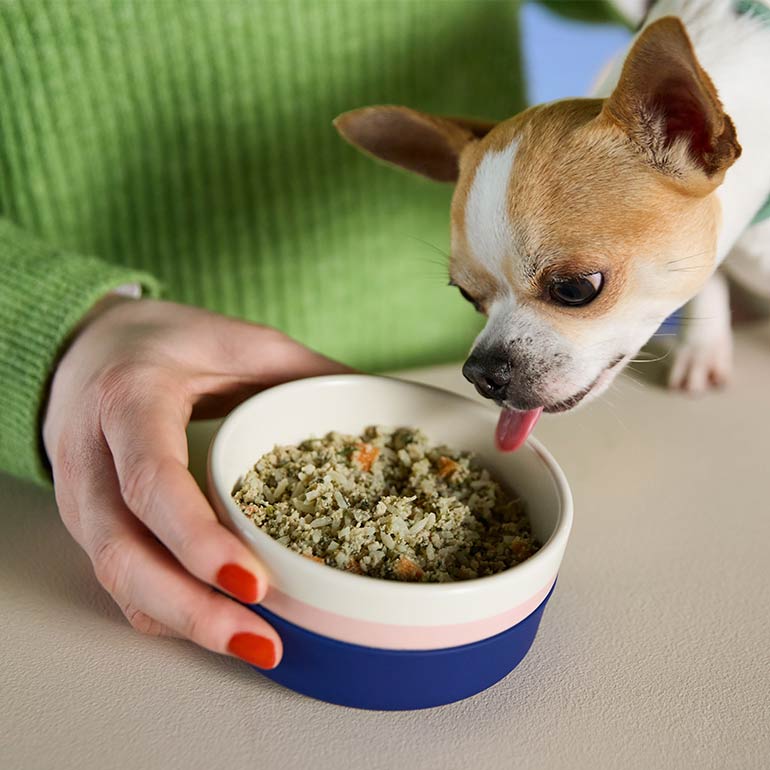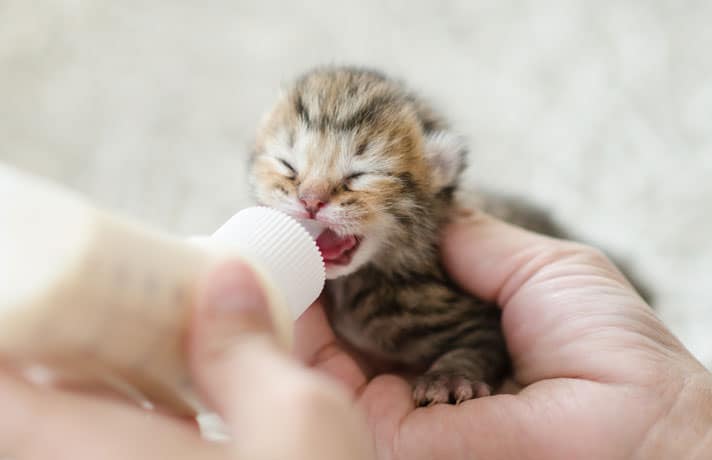In This Guide
Why You May Want to Transition Your Pet to a New Food
You sometimes make adjustments to your own diet to keep yourself at your healthiest, right? It's the same with your pet—you might have to change their food to keep them in tip-top shape. Common reasons for changing your cat or dog's diet include:
Has your picky eater suddenly decided that they don’t like their kibble? Has your kitten grown up into an adult feline? Consult your vet—they may recommend that it’s time to transition your pet to a new food. In addition to an unexpected dislike of their old food or transitioning into a new life stage, other reasons why your veterinarian may recommend changing your dog or cat’s food can include:
- Your pet has begun to refuse their current food
- They have grown into a new life stage (for example, they're ready to switch from puppy food to adult dog food, or from adult cat food to a senior diet)
- Their current food causes digestive upset, like gas, diarrhea or constipation
- They are overweight and need a weight-loss food
- They have food allergies or other food sensitivities that may be alleviated through a specialized/prescription diet
- They’re suffering from aliments like dull hair coat or poor energy that can be alleviated through additional nutrients (such as omega-3 fatty acids) in their diet
- They have been diagnosed with a health condition that requires a specific diet to help treat
- It’s otherwise been determined that their nutritional needs aren’t being met
You may also find yourself considering a diet change-up if you want to purchase a food made and sourced in the United States, or be forced to find a new food if your pet’s old grub has been recalled or discounted. Just be sure to keep your vet in the loop: You should always consult your vet before making changes to your pet’s diet.
How to Transition Your Pet to a New Food
Here's the main thing to remember when changing your dog or cat’s food: It should be a slow, gradual process. While some pets can tolerate such an abrupt switch in their diet without much issue, other pets—especially those with a sensitive stomach—may develop issues including:
- stomach upset
- vomiting
- diarrhea
- increased gas
- nausea
- refusing to eat
Cats in particular are notoriously picky and can be slow to accept dietary changes.
That's why, in order to guarantee the best chance of a successful diet switch, it’s best to transition to the new food slowly. Generally speaking, it should take about a week to completely switch from one food to another using the transition schedule below. But remember: Each pet is unique, and some dogs and cats may need a longer transition period to adapt to the new food.
Ready to make the switch? Here's how it's done.
1Serve a ratio of 25% new food to 75% current food.
To start, mix a little bit of your pet's new food to into their current food—without increasing the overall amount of food given. Aim for a ratio of about 25% new food to 75% current food. So, for example, if you feed your dog one cup of food daily, mix 1/4 cup of their new food into 3/4 cup of their current food.
Serve this ratio for two to three days, and monitor your pet for signs of GI distress like soft or loose stool, vomiting, and refusing to eat. If your pet does have a negative reaction, return to their old diet for one week, to allow their stomach to balance itself out. Then, try the process again with a smaller ratio of new food to old—maybe 15% or 10% this time.
If your pet seems normal—or, dare we hope, even happy about the change—continue to the next step.
2Serve a ratio of 50% new food to 50% current food.
Now, try a ratio of about half new food and half current food. Serve this to your pet for another two to three days, and remember to monitor them for negative reactions. Return to their former diet for one week if issues do arise, and go slower when you try again.
If your pet still seems normal, continue to the next step.
3Serve a ratio of 75% new food to 25% current food.
It's time to up the ratio again—this time, with more new food than old. Aim for about 75% new food to 25% old—so, using our previous example where your pet eats one cup of food a day, you'll mix 1/4 cup old food into 3/4 cup new food at this stage.
Monitor your pet on this diet for another two to three days, then move on if they're adjusting well.
4Serve a whole bowl of new food.
Troubleshooting and Safety Tips
- If your pet reacts negatively to their new food no matter how slowly or gradually you introduce it, there's a chance that their digestive system is sensitive to an ingredient in the new diet. Give your a vet a call to see how you should proceed.
- Take care to ensure that your pet is eating throughout the transition. While you of course don’t want to see your furry bestie go hungry, cats especially can end up with liver damage if they go without eating for more than a couple days.
Which Is the Best Pet Food for My Pet?
With so many types of pet foods on the market today, it can be hard to find the right one for your pet. Overall, the best dog or cat food is determined by the health and nutritional needs for your specific pet, which is why your vet is best resource when it comes to their diet.
Whatever you feed, make sure it meets the guidelines for a complete and balanced diet as set forth by the Association of American Feed Control Officials (AAFCO)—a voluntary membership association of local, state and federal agencies to regulate the sale and distribution of animal feeds and animal drug remedies. A dog or cat food with their seal of approval on the label will have all the nutrients a typical pet needs to thrive.
Get more tips on choosing the best dog food or cat food.
Share:

